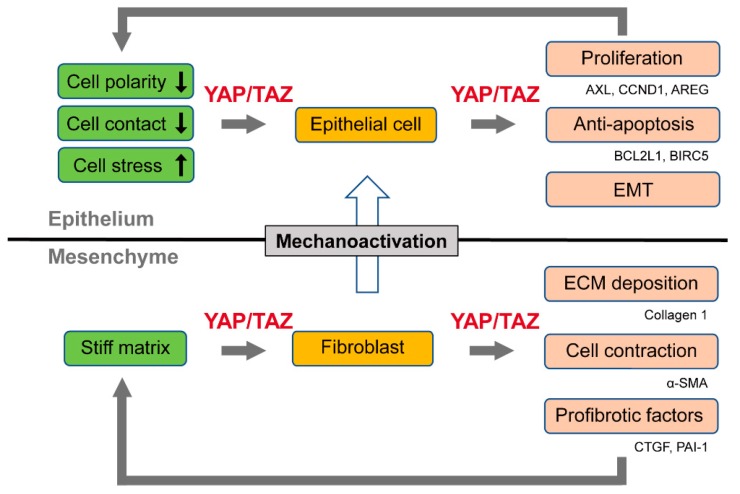Figure 1.
The activation of Yes-associated protein (YAP) and the transcriptional coactivator with PDZ-binding motif (TAZ) in epithelial cells and fibroblasts. In epithelial cells, the disruption of cell polarity, loss of cell contact, and increased cell stress signals activate YAP/TAZ, which promotes cell proliferation and the epithelial–mesenchymal transition (EMT), and inhibits apoptosis. In contrast, in fibroblasts, YAP/TAZ act as sensors of extracellular matrix (ECM) stiffness through the mechanotransduction pathway. YAP/TAZ also stimulate the production of fibrogenic factors and ECM proteins and enhance cell contraction. This process promotes tissue stiffness, thus forming a feed-forward loop of fibroblast activation and tissue fibrosis. YAP/TAZ can also be activated in epithelial cells of fibrotic tissues due to increased ECM stiffness.

